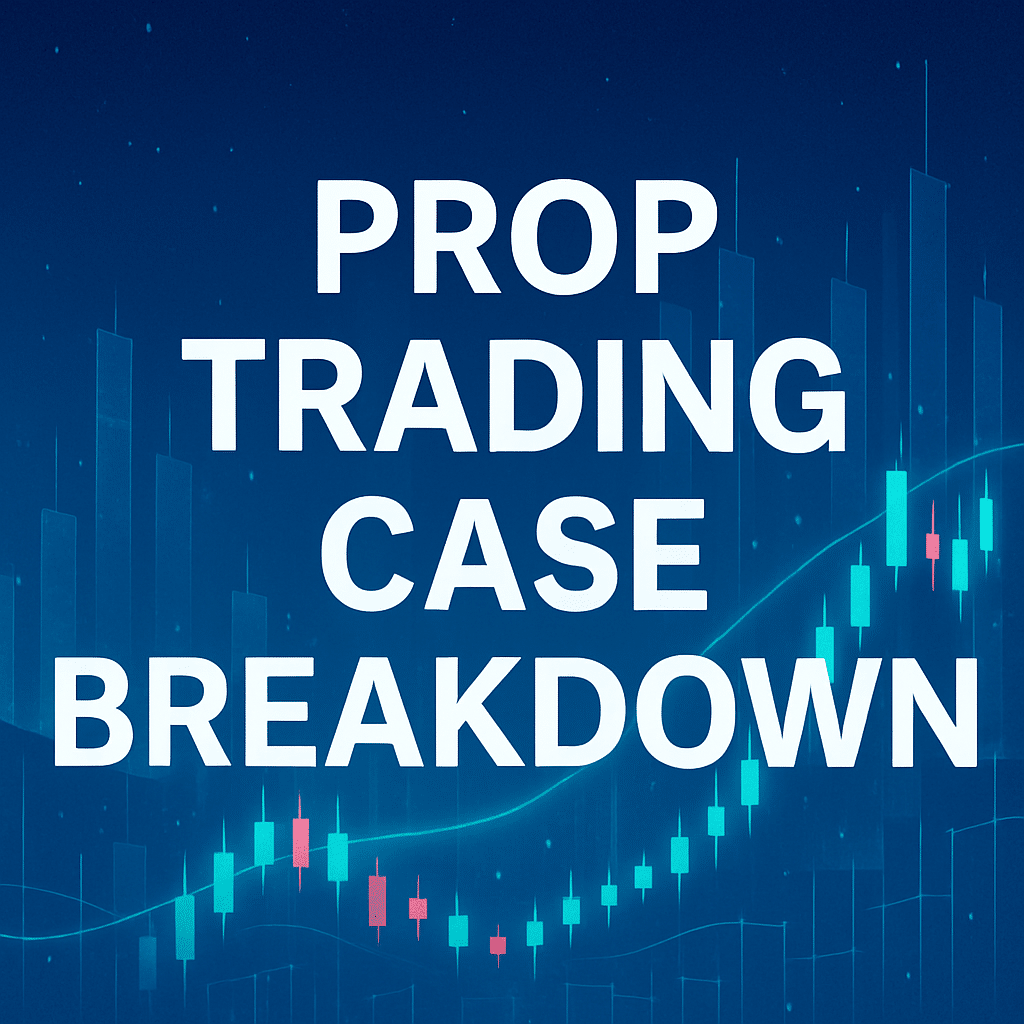Breaking Down Real Prop Trades: Lessons Learned
Prop trading offers a unique opportunity for skilled traders to grow capital without risking their own funds. In this article, we begin with a detailed prop trading case breakdown and walk through real trade decisions, outcomes, and what they reveal about trader psychology and strategy. Whether you’re new to prop trading or looking to sharpen your funded account performance, these insights are directly applicable to your trading journey.
The Setup: Context Behind the Trade
Let’s start by understanding the market environment. The case revolves around a trader who completed a challenge account with Larsa Capital and received a funded account with $50,000 in equity. This account followed the typical rules: daily drawdown limits, an 80% profit share, and a 10% maximum drawdown.
The trader’s strategy focused on high-volume New York session moves in major forex pairs, relying heavily on support/resistance, liquidity grabs, and momentum continuation. The setup was built around the EUR/USD reacting to a recent FOMC press release.
The Execution: What Went Right and Wrong
The trader identified a clear range where liquidity was likely to be swept. Their bias was bearish due to the dollar strength narrative, supported by strong fundamentals and technical confluence. Here’s what the trader did:
- Entered a short position just after a fake breakout above resistance.
- Set a 1.5:1 risk-to-reward ratio.
- Used a tight stop-loss just above the liquidity wick.
The entry was well-timed, and the market initially moved in their favor. However, volatility caused a sharp retracement which hit the stop-loss before continuing downward.
Lesson #1: Timing and Stop Placement Matter
Even with a solid bias and market structure read, stop placement can make or break a trade. In this case, the trader placed the stop too tight, not accounting for the typical post-news volatility. A wider stop with reduced lot size might have preserved the trade.
Psychological Breakdown: The Real Challenge
After the stop-loss was hit, the trader experienced hesitation. They doubted their bias and avoided re-entering, even though the market gave a second chance. This emotional reaction is common, especially in funded environments where rule violations can lead to account loss.
Lesson #2: Emotional Discipline Over Ego
Reacting emotionally often leads to missed opportunities or revenge trading. In prop trading, your goal isn’t to win every trade—it’s to follow a repeatable, risk-managed process.
Second Trade: Redemption or Repeat?
The trader sat out the next session, reflected, and returned the following day with the same pair. This time, they waited for confirmation: a break of structure on the 15-minute chart with momentum aligning to their bias.
They:
- Entered with a limit order.
- Used a 1:2 risk-to-reward setup.
- Placed the stop beyond the last swing high.
This trade ran to full target, netting 4% profit on the funded account.
Lesson #3: Patience Yields Clarity
By stepping back and re-analyzing, the trader avoided impulsive decisions. Sometimes, skipping a session can give you the objectivity you need to execute better.
Scaling and Drawdown: Managing Risk in Funded Accounts
In many prop accounts, scaling up your position after a few winners can be tempting. But in this case, the trader stuck to fixed risk per trade. Why?
They understood that even in a winning streak, the drawdown limits of a funded account could be breached with just a few oversized trades. Instead, they grew the account gradually over three weeks, eventually reaching a 10% profit and qualifying for their first payout with Larsa Capital.
Lesson #4: Risk Management Is the Long Game
Avoid emotional scaling. Funded trading is about sustainability. Controlled risk allows you to stay in the game long enough to see consistent returns.
Subtlety Wins: A Prop Trading Case Breakdown Worth Noting
This prop trading case breakdown highlights how seemingly small decisions around timing, psychology, and discipline determine long-term success. It also underlines why many traders fail in funded environments despite strong technical skills.
What set this trader apart wasn’t their edge—many traders use similar setups. It was their willingness to adapt, reflect, and not rush.
Top 5 Takeaways from This Case:
- Bias is useless without flexibility – Don’t hold on to your view if price action contradicts it.
- Tight stops often cost more than they save – Account for volatility in your strategy.
- Take breaks to reset – Clarity comes from space, not screen time.
- Emotions amplify in funded trading – Prepare mentally, not just technically.
- Follow the rules, then profit – Growth comes from staying funded, not hitting home runs.
Final Thoughts: How to Apply This to Your Trading
Real trading success comes from practical experience, not just theory. If you’re pursuing funding with Larsa Capital or any similar program, treat each trade as part of a larger process.
Break down your own trades weekly. Ask:
- Did I follow my plan?
- Were my stops and targets reasonable?
- Did emotions influence my decisions?
Use these reflections to refine your edge and maintain long-term consistency. By treating each loss as feedback rather than failure, you turn every session into growth.
At Larsa Capital, we encourage traders to build sustainable strategies, and real trade analysis is key to that process. Use this case as a model and start documenting your own journey today.

